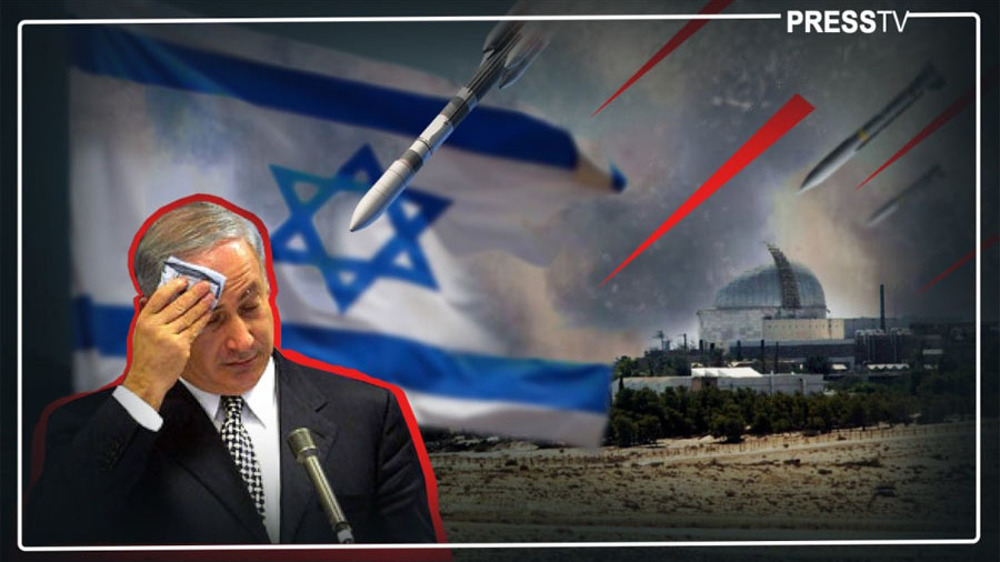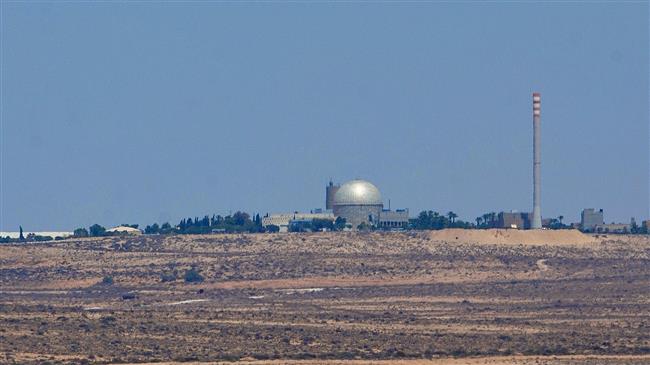Dimona explosion: Israel looks weak regardless of what actually happened
By Robert Inlakesh
Days after the massive explosion which took place near Israel’s Dimona Nuclear Facility, the Israeli regime has fallen silent on the incident in an attempt to eradicate the situation's embarrassing feats from the collective memories of their population.
Thursday morning panic amongst Israelis quickly spread as a massive explosion was reported near Dimona, in the Naqab (Negev), close to where Israel’s secret nuclear facility is located.
The incident, reported throughout Israeli media at roughly 1:34 a.m. (Palestine time), initially sparked speculation on where the explosion had originated with some claiming a rocket was fired from Gaza. These reports were then quickly debunked, as Hebrew media quoted the Israeli military as stating that no such rocket fire had come from the besieged coastal enclave. Israeli media reports then began to emerge, speculating that due to sirens having been triggered around the Dimona area and Israel’s Ariel Sharon military base, a missile could have been fired from Syria.
The Israeli Occupation Forces later issued a statement in which they claimed that a Syrian surface-to-air (SAM) missile had pursued one of its fighter jets and landed in an open area near Dimona. The IDF’s twitter handle had explained that Israel then bombed the Syrian battery from which the missile had come, as a “response”.
Syria’s SANA reported that as a result of Israeli airstrikes on the Dameer area, in the Western countryside of Damascus, 4 of its soldiers had been injured and material damage had been reported.
Most of the Western mainstream press reported that Israel had “responded” to an errant Syrian SAM missile that had hit Israel, whilst the Washington Post speculated that Iran may have been involved. But the narrative of an Israeli response is not even remotely true, even if we are to believe Israel’s exact account of events.
According to Israel’s narrative, Israeli warplanes had attempted to bombard sites in Syria’s south from the occupied Golan Heights and were fired upon by Syrian air defense. If this is indeed the beginning of the story, then it was Syria that responded not Israel. In fact, the second Israeli strikes were just another attack on Syria and an act of war, but when it comes to the Western media, Israel can do no wrong and is always both the victor and the victim.
Israel’s story not adding up, but looks bad either way
There is a real reason Israel is desperately attempting to bury this incident and that’s because no matter which way you look at this, Israel looks weak.
Firstly, according to Israel's official narrative, they admit to firing the first shot and also admit to failing to confront a Syrian air defense missile. The Israelis love to claim their superiority in the area of air defenses, bragging about their expensive Iron Dome, David’s Sling and Patriot Missile Systems. But apparently none of their systems were able to confront a single surface-to-air missile which flew approximately 250 kilometers off course. This is also a point of contention for many who argue that the SAM would not have likely made it so far off course.
If Israel’s account is correct, then considering Israel had specifically re-enforced its air defense systems around the occupied Golan and Dimona, its air defense systems are proven completely useless in the face of a real attack. This does massive harm to the reputation of the Israeli regime and its weapons manufacturers.
Then we have the dispute over what really occurred. Many people fail to believe that an explosion that shook homes as far north as occupied Ramallah in the West Bank, came from SAM.
Independent journalist Hamde Abu Rahmah, based in the West Bank village of Bilin, told me that the shockwaves from the blast were larger than anything he’d felt before, even during the various wars on the Gaza Strip. He also felt that Israeli media were attempting to hide the story, we spoke prior to the Israeli official narrative having been announced some 40 minutes later.
The alleged SAM was said to have been an SA-5 missile, fired from a Russian S-200 system, packing a 200 kilogram warhead. In all previous known failures of the missile to hit its target, it had exploded just before impact, yet we have no confirmation from the Israeli side whether it did as such. If the 200 kilogram warhead did hit the surface, then it may have caused a big blast, but whether that blast would be felt over 100 kilometers away is a cause for debate.
Israel has refused to provide additional details on what the large explosion actually was and whether the alleged Syrian SAM was the cause of the massive blast heard and felt, or whether it was a Patriot missile attempting to intercept it.
Israel’s official narrative makes it look weak in the face of basic munitions, not even intended to harm it. It also admits that through their reckless offensive actions against Syria, they endangered the lives of their own civilians. Alternatively, they could be lying and it could have been a purposeful attack from within Syrian territory, with this showing Israel’s vulnerability to further strikes.
Although there’s no conclusive evidence to prove exactly what happened, if Israel was struck intentionally, then that means it’s even weaker than if its air defenses failed to shoot down an errant SAM over the course of hundreds of kilometers, landing near their nuclear site.
Robert Inlakesh is a journalist, writer and political analyst, who has lived in and reported from the occupied Palestinian West Bank. He has written for publications such as Mint Press, Mondoweiss, MEMO, and various other outlets. He specializes in analysis of the Middle East, in particular Palestine-Israel. He also works for Press TV as a European correspondent.
The views expressed in this article do not necessarily reflect those of Press TV.
‘Trump authorized Epstein’s death’; ‘love for young girls’: Accusations infest new Epstein files
Libya’s army chief killed in Ankara plane crash after high-level talks with Turkish officials
Israeli settlers tear gas 3 Palestinian children in attack on West Bank home
‘He raped me’: New trove of Epstein files reveals why Trump tried to bury them
Iran halts gas exports to Iraq amid surge in domestic demand
Belgium files to intervene in South Africa’s ICJ genocide case against Israel
Netanyahu appears in court for 65th time in ongoing corruption trial
Iran's government submits $111bn budget bill for year 1405














 This makes it easy to access the Press TV website
This makes it easy to access the Press TV website